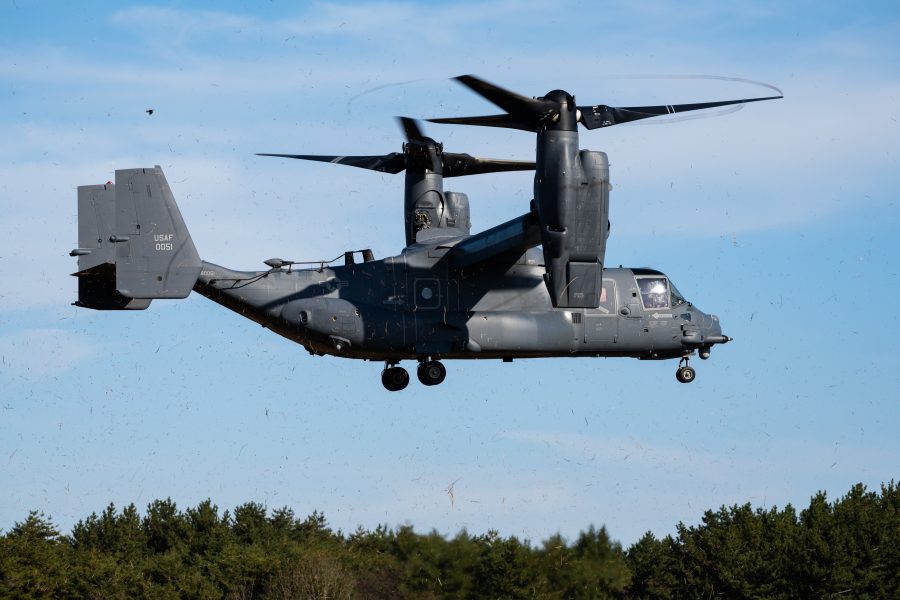A U.S. Air Force CV-22 Osprey crashed off the coast of Japan on Nov. 29, according to Air Force Special Operations Command and Japanese officials.
In a release, AFSOC said the Osprey, assigned to the 353rd Special Operations Wing at Yokota Air Base, suffered a mishap during a “routine training mission” off the coast of Southern Japan. Eight Airmen were aboard—earlier media reports indicated there were either six or eight crew members.
AFSOC’s release noted that the Airmen’s conditions “are unknown at this time.” Multiple Japanese media outlets reported that one individual recovered from the crash has been pronounced dead, citing Japanese coast guard officials. An AFSOC spokesperson could neither confirm nor deny those reports.
Air Force Special Operations Command operates a fleet out around 50 Ospreys, including six based at Yokota.
In a statement, the Japanese Ministry of Defense said it received reports of an American Osprey crashing in the ocean near Yakushima at around 2:50 p.m. local time, and dispatched aircraft and ships to conduct a search and rescue operation.
According to the Associated Press, Okinawa Gov. Denny Tamaki told reporters that he would ask the U.S. military to suspend all Osprey flights in Japan.
The Osprey, also used by the Marine Corps and Navy, is famed for its tilt-rotors, which allow it to take off and land like a helicopter, then move its rotors and fly like an airplane. However, it has also developed a reputation for safety incidents.
Most recently in August, three Marines were killed when their Osprey crashed in Australia. In 2022, two separate crashes in San Diego and Norway resulted in the deaths of nine Marines.
The Air Force has only recorded one fatal CV-22 mishap, in 2010. However, USAF Ospreys have also had issues. AFSOC temporarily grounded the tilt-rotor aircraft in 2022 over safety concerns related to two incidents of “hard clutch engagements” within a few weeks of each other—a slipping clutch caused a fail-safe feature in the system to transfer power from one engine to the other, as if the first engine was no longer engaged. However, because the clutch was only slipping, and not disengaged, it was suddenly re-engaging, generating enormous spikes in torque.
Such incidents result in “kind of a Christmas tree of lights, caution lights, in the cockpit, and some pretty squirrely flight control inputs,” then-AFSOC commander Lt. Gen. James C. “Jim” Slife said at an AFA Warfighters in Action event in September 2022.
Eventually, the V-22 Joint Program Office said it was imposing flight-hour limits on V-22 input quill assemblies—part of the prop rotor transmission, which includes the gearbox and clutch, and transmits power from the engine to the Osprey’s massive propellers.
In its release, AFSOC stated that the cause of this latest mishap is currently unknown.

